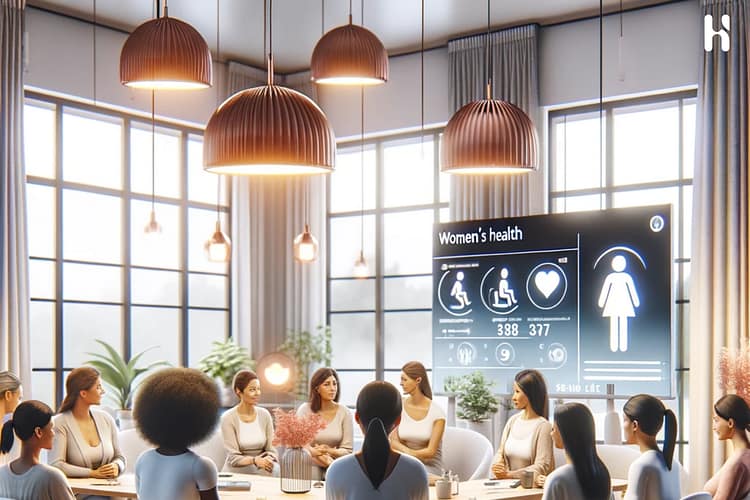
The Global Burden of Disease in 2019 highlights about 12 million cases of stroke, over 140 million disability-adjusted life-years (DALYs) lost, and over 6 million deaths globally. These are not just figures; they are a call to action for urgent intervention in stroke diagnosis and stroke management. The clock ticks incessantly for each stroke patient, where a swift diagnosis can mean the difference between recovery and irreversible damage.
Large Vessel Occlusions (LVOs), the blockages in major arteries feeding the brain, are notoriously tricky to pinpoint. Such occlusions, if left undiagnosed or mistreated, can cascade into significant brain damage, rendering once-simple tasks impossible for patients. Diagnostic delays in identifying these LVOs can magnify the devastation, straining our healthcare infrastructure and taxing our skilled radiologists. While radiologists remain very important to our healthcare systems, human error or oversight, especially in high-pressure situations or among less-experienced practitioners, can lead to potential misdiagnoses.
AI’s diagnostic solution for stroke
In today’s era of technological evolution, AI stands at the forefront, reshaping healthcare diagnostics profoundly. Particularly in the domain of neurology and stroke diagnosis, the impact is undeniable. The Automation Platform (AP), equipped with advanced algorithms, offers more than diagnostic assistance—it heralds a new paradigm in medical evaluation. Designed to learn and adapt, the AP serves as an advanced diagnostic partner, merging computational might with vast medical databases to render rapid and precise insights.
When examining Large Vessel Occlusions (LVOs), crucial blockages in the brain’s major arteries, AP’s specificity astounds at 99%. Such precision ensures that patients receive timely and accurate intervention. Furthermore, the AP’s efficiency in processing Computed Tomography Perfusion (CTP) scans—a vital tool in stroke assessment—is game-changing. Where traditional analysis could take considerable time, AP accomplishes this in significantly shorter durations (196 seconds versus 243–349 seconds of traditional analysis), potentially saving crucial time in stroke management. While radiologists have a commendable mean sensitivity of 87% for LVO detection, which speaks to their expertise and training, the AP offers a level of consistency and specificity that can enhance diagnostic procedures. Its utility is not about supplanting the human touch but complementing it, integrating seamlessly into the diagnostic workflow to enhance outcomes and patient care.

In a realm where every second counts, the blend of human expertise with consistent AI-driven insights, as demonstrated by AP, could be the game changer in stroke management.N
Navigating challenges that might hinder implementation and scalability
- Specificity for M2 vessel occlusions:
- Challenge: Among the AP’s limitations was its less-than-optimal sensitivity when detecting M2 vessel (a segment of the Middle Cerebral Artery in the brain, crucial for blood flow) occlusions, which are crucial in diagnosing and treating strokes. The detailed anatomy and variability in the M2 segment might contribute to this challenge.
- Solution: To enhance accuracy, we should not only increase the volume of M2-related cases in the AP’s training data but also refine the algorithm to better understand the intricacies of this particular vessel segment. Continuous feedback loops with experienced radiologists can further refine and optimize the system.
- Potential automation bias:
- Challenge: Over-relying on AI might lead to a cognitive bias known as automation bias, where clinicians may overlook or under-emphasize their observations in favor of machine-generated results, potentially missing out on critical insights.
- Solution: Regularly scheduled training and refresher courses can emphasize the need for human oversight. Highlighting the AP’s role as a diagnostic aid rather than a replacement can ensure the synergy of human-machine collaboration.
- Maintenance and upgrades:
- Challenge: Regular software updates and maintenance, which are crucial for an AI system’s efficacy and security, could pose challenges in areas with limited connectivity and technical expertise.
- Solution: Implement over-the-air updates that are compressed and can be downloaded during periods of connectivity. Additionally, establishing local tech support hubs or partnering with regional tech schools can offer hands-on assistance and ensure the AP operates at its best.
- Cost constraints:
- Challenge: While the AP might prove invaluable, its initial setup, licensing, or recurring costs could be prohibitive for many low-resource settings.
- Solution: Adopting a tiered pricing model or offering subsidized rates for low-income regions can help bridge this gap. Collaborations with international health bodies, NGOs, or philanthropic entities can further offset costs and ensure affordability.
Addressing the unique challenges of low-resource settings is pivotal to actualizing the potential of AI in global health. Tailored solutions, grounded in an understanding of ground realities, can be the bridge between innovative technology and its transformative impact on global health. With AP serving as a model, the path toward global health equity becomes clearer. Ensuring that each hurdle is seen as an opportunity for adaptive innovation is key. As we venture deeper into this meld of technology and healthcare, the vision of a world where health equity is more than just an aspiration becomes tangible.
Considering the nuances of low-resource environments, how do you envision further tailoring technological innovations like the AP to best serve these communities?
Source Article: https://www.nature.com/articles/s41598-023-39831-x#Sec10
Disclaimer: Please note that the opinions, content, and analysis in my posts are entirely my own and do not reflect the views of any current or past employers or institutional affiliations. These posts, based solely on publicly available information, are for informational purposes and should not be taken as professional advice. All insights and conclusions are my viewpoints and should not be considered representative of any organizations I am or have been associated with. This content is not endorsed by, nor does it represent the stance of any affiliated entity.





